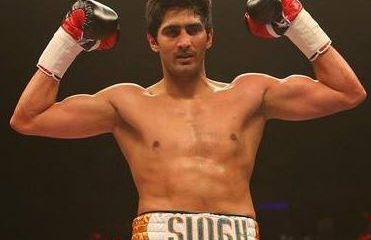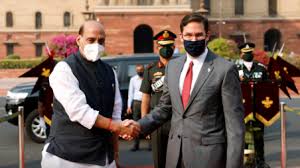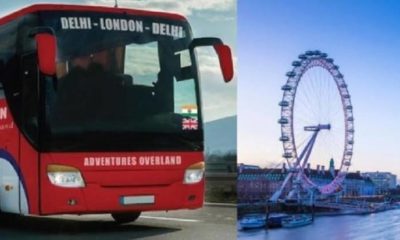Feature
Pre-poll survey projects Nitish win in Bihar

New Delhi: The Grand Alliance led by Bihar Chief Minister Nitish Kumar is tipped to win a simple majority in the assembly polls starting on Monday, a pre-election survey said on Thursday.
Another survey warned of a hung assembly, with the Bharatiya Janata Party (BJP)-led NDA securing 119 seats, to the Grand Alliance’s 116 in the 243-member assembly. The half-way mark in the house is 122 seats.
A CNN IBN/IBN7-Axis survey said the Grand Alliance of the Janata Dal-United (JD-U), the Rashtriya Janata Dal (RJD) and the Congress was expected to win 137 seats.
The BJP-led coalition was poised to win 95 seats, garnering a 38 percent vote share. The Grand Alliance was tipped to get 46 percent vote share.
The NDA’s main constituent, the BJP, was projected to win 82 seats. Its ally the LJP of Ram Vilas Paswan may get only two seats. Former chief minister Jitan Ram Manjhi’s HAM is expected to bag eight seats and the RLSP of Upendra Kushwaha three seats.
The JD-U led by Nitish Kumar was expected to win 69 seats, followed by Lalu Prasad’s RJD (48 seats) and the Congress (20 seats).
The survey, conducted between September 3 and October 4, involved over 24,000 respondents and covered all the 38 districts and 243 constituencies of Bihar.
Fifty percent of the respondents were in the 18-35 age group, 32 percent in the 36-50 age group and the remaining fell in the 50-plus age group.
In a paradox of sorts, 33 percent of Yadavs and 28 percent of Muslims seemed to be deserting the RJD and the JD-U in favour of the NDA or others.
At the same time, the Grand Alliance was likely to get more votes from the youth (18-35 age group) than the NDA alliance.
Just over 40 percent feel Nitish Kumar will benefit electorally because of the alliance with Lalu Prasad.
Development would be the main election issue. Other issues are inflation and “bijli-paani-sadak”, ranking second with 13 percent each.
As many as 45 percent of the respondents felt the Nitish government had performed as per expectations while 17 percent said it exceeded their expectations.
With reference to areas of failure, 45 percent said there was no control over corruption during Nitish Kumar’s rule.
Nitish Kumar’s development model got a thumbs-up from 52 percent of the respondents. In contrast, the development model of Prime Minister Narendra Modi in the central government got 48 percent support.
The India TV-CVoter pre-poll survey said the BJP-led NDA could win 119 seats, three short of the magic mark of 122 in the Bihar assembly, and the Grand Alliance 116. Eight seats may go to ‘Others’.
The NDA has been projected to get 43 percent vote share, compared to 41 percent for the Grand Alliance.
The C-Voter survey covered 9,916 interviews covering all 243 segments.
In 2010, the then BJP-JD-U alliance won 206 seats, while the RJD-led alliance with Ram Vilas Paswan got only 25 seats. In the 2014 Lok Sabha battle, the NDA won in 174 assembly segments.
Asked which was the biggest issue for the voters, 17.9 percent said unemployment, 12.7 percent said power cuts, while 25 percent respondents said “can’t say”.
Asked which party can solve these problems better, 44.7 percent opted for the NDA while 38.6 percent favoured the RJD-JD-U-Congress alliance.
In the caste-wise social groupings, 44 percent Dalits, 41 percent Mahadalits, 50 percent MBC (most backward castes), 29 percent OBC and a whopping 70 percent upper castes favoured the NDA.
Another 28 percent Dalits, 33 percent Mahadalits, 31 percent MBC, a whopping 59 percent OBC and 15 percent upper caste respondents favoured the Grand Alliance.
Entertainment
Meghalaya Reserves Legalized Gambling and Sports Betting for Tourists

The State Scores Extra High on Gaming-Friendly Industry Index
Meghalaya scored 92.85 out of 100 possible points in a Gaming Industry Index and proved to be India’s most gaming-friendly state following its recent profound legislation changes over the field allowing land-based and online gaming, including games of chance, under a licensing regime.
The index by the UK India Business Council (UKIBC) uses a scale of 0 to 100 to measure the level of legalisation on gambling and betting achieved by a state based on the scores over a set of seven different games – lottery, horse racing, betting on sports, poker, rummy, casino and fantasy sports
Starting from February last year, Meghalaya became the third state in India’s northeast to legalise gambling and betting after Sikkim and Nagaland. After consultations with the UKIBC, the state proceeded with the adoption of the Meghalaya Regulation of Gaming Act, 2021 and the nullification of the Meghalaya Prevention of Gambling Act, 1970. Subsequently in December, the Meghalaya Regulation of Gaming Rules, 2021 were notified and came into force.
All for the Tourists
The move to legalise and license various forms of offline and online betting and gambling in Meghalaya is aimed at boosting tourism and creating jobs, and altogether raising taxation revenues for the northeastern state. At the same time, the opportunities to bet and gamble legally will be reserved only for tourists and visitors.
“We came out with a Gaming Act and subsequently framed the Regulation of Gaming Rules, 2021. The government will accordingly issue licenses to operate games of skill and chance, both online and offline,” said James P. K. Sangma, Meghalaya State Law and Taxation Minister speaking in the capital city of Shillong. “But the legalized gambling and gaming will only be for tourists and not residents of Meghalaya,” he continued.
To be allowed to play, tourists and people visiting the state for work or business purposes will have to prove their non-resident status by presenting appropriate documents, in a process similar to a bank KYC (Know Your Customer) procedure.
Meghalaya Reaches Out to a Vast Market
With 140 millions of people in India estimated to bet regularly on sports, and a total of 370 million desi bettors around prominent sporting events, as per data from one of the latest reports by Esse N Videri, Meghalaya is set to reach out and take a piece of a vast market.
Estimates on the financial value of India’s sports betting market, combined across all types of offline channels and online sports and cricket predictions and betting platforms, speak about amounts between $130 and $150 billion (roughly between ₹9.7 and ₹11.5 lakh crore).
Andhra Pradesh, Telangana and Delhi are shown to deliver the highest number of bettors and Meghalaya can count on substantial tourists flow from their betting circles. The sports betting communities of Karnataka, Maharashtra, Uttar Pradesh and Haryana are also not to be underestimated.
Among the sports, cricket is most popular, registering 68 percent of the total bet count analyzed by Esse N Videri. Football takes second position with 11 percent of the bets, followed by betting on FIFA at 7 percent and on eCricket at 5 percent. The last position in the Top 5 of popular sports for betting in India is taken by tennis with 3 percent of the bet count.
Local Citizens will Still have Their Teer Betting
Meghalaya residents will still be permitted to participate in teer betting over arrow-shooting results. Teer is a traditional method of gambling, somewhat similar to a lottery draw, and held under the rules of the Meghalaya Regulation of the Game of Arrow Shooting and the Sale of Teer Tickets Act, 2018.
Teer includes bettors wagering on the number of arrows that reach the target which is placed about 50 meters away from a team of 20 archers positioned in a semicircle.
The archers shoot volleys of arrows at the target for ten minutes, and players place their bets choosing a number between 0 and 99 trying to guess the last two digits of the number of arrows that successfully pierce the target.
If, for example, the number of hits is 256, anyone who has bet on 56 wins an amount eight times bigger than their wager.





















